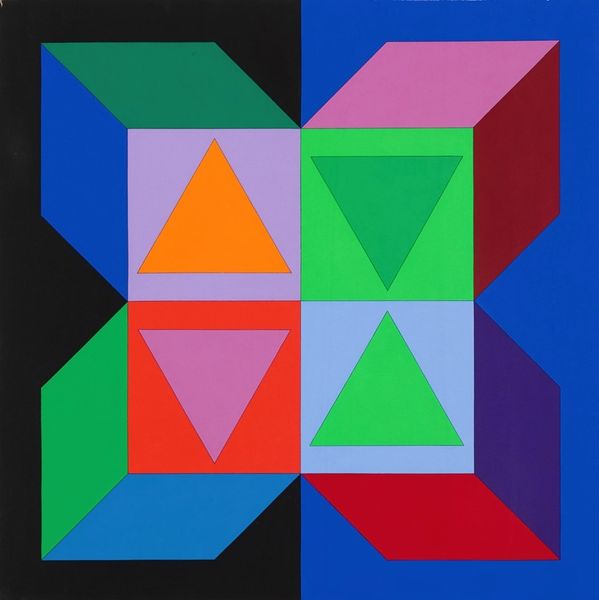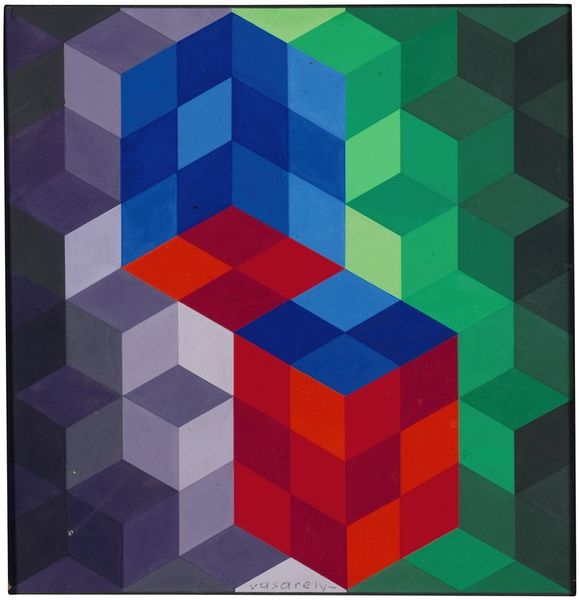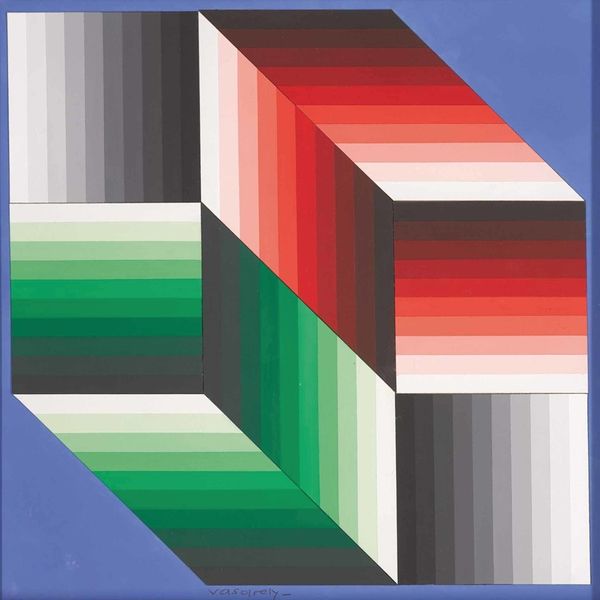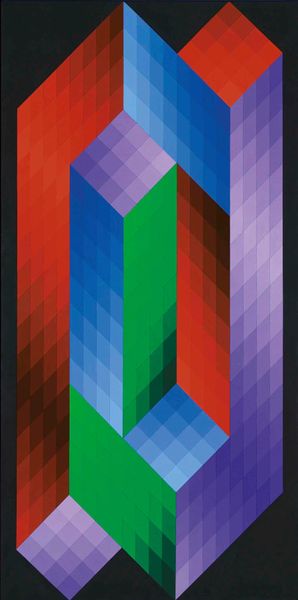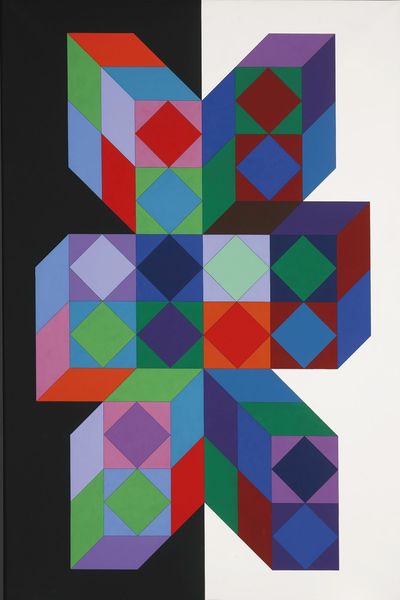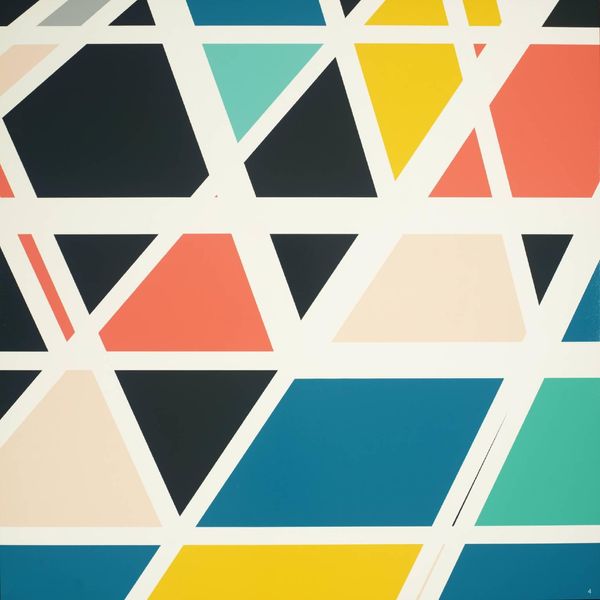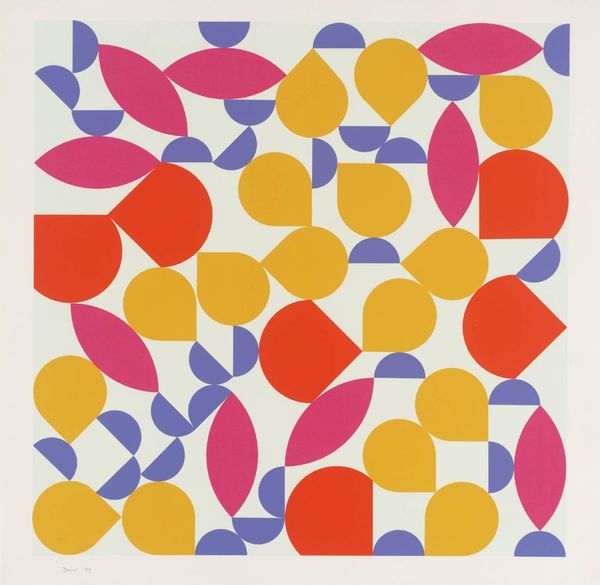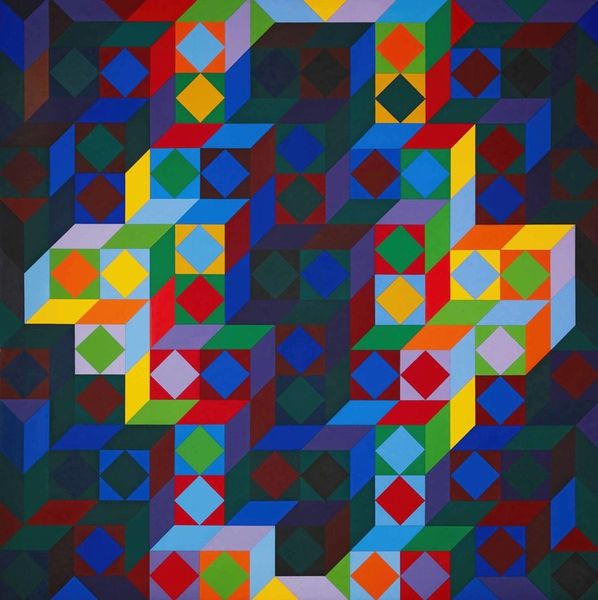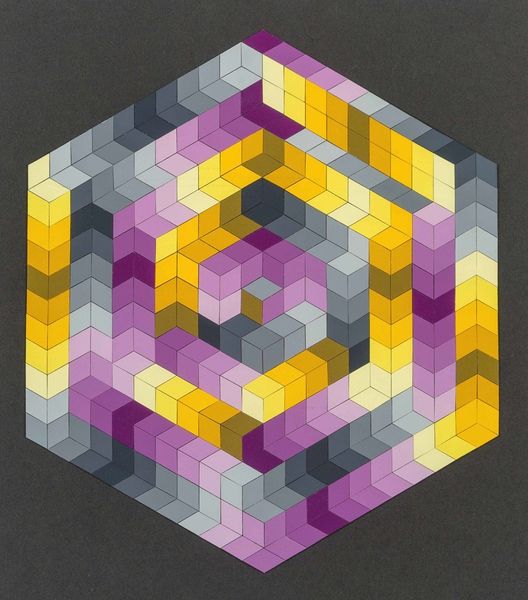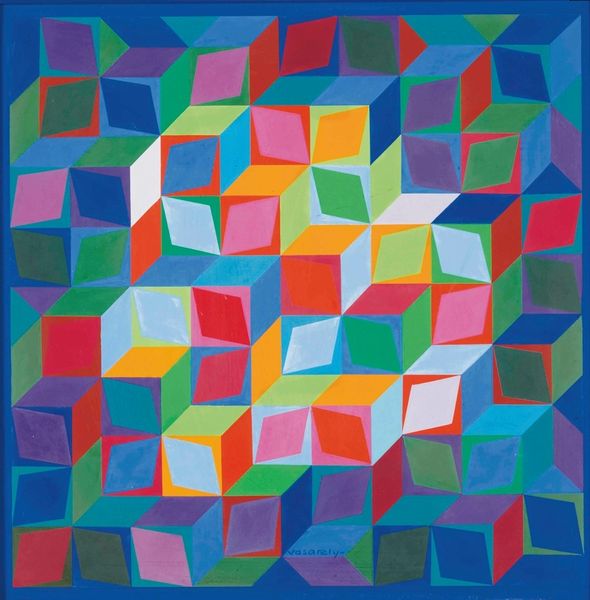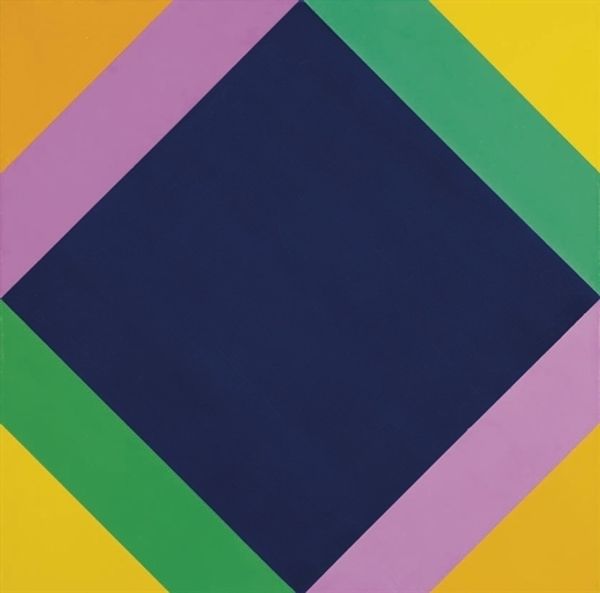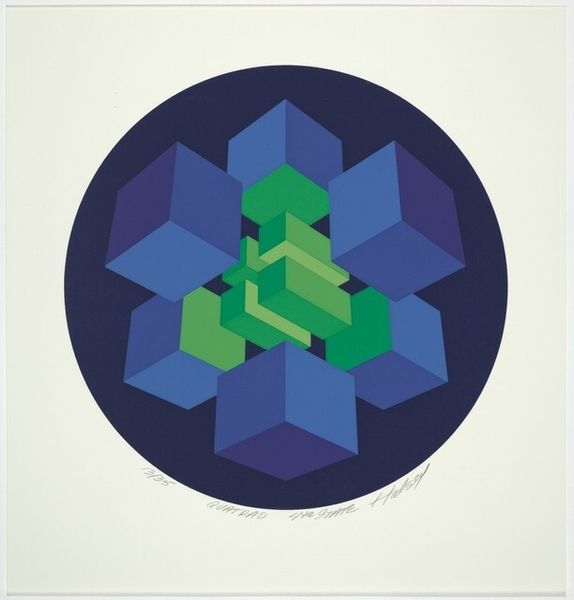
painting
#
op-art
#
painting
#
geometric
#
geometric-abstraction
#
abstraction
Copyright: Modern Artists: Artvee
Curator: At first glance, I find Victor Vasarely's "Art et Architecture" rather visually striking. The geometric forms in this 1988 piece really pop against that vivid blue backdrop. It feels almost playful. Editor: Playful, yes, but I see something more structural, a controlled composition. The repetition and symmetry speak to the dehumanizing structures that shape everyday life. Notice how Vasarely subverts the promise of a unified, progressive vision through its almost chaotic optical illusions. Curator: I appreciate that point of view, that the visual vibration here unsettles rather than soothes. It's fascinating how Vasarely merges the worlds of art and architecture through geometric shapes rendered in acrylic. One could certainly see the echoes of modernism in it. I mean, what are we meant to be seeing, buildings or painting? Editor: That duality—art and architecture—is the linchpin! How we engage with modernist promises while they often collapse, visually and experientially. It feels unstable. And I think that feeling might come, also, from considering how this canvas, itself, reflects how galleries and institutions often reframe challenging messages, rendering them less, er, incendiary than intended. It turns critical architecture into pure aesthetics. Curator: I think I disagree that it neutralizes a powerful message, per se. I'd say the piece invites critical discourse, presenting shapes and forms that hint to many different themes and narratives, from geometry, to human forms, or structuralist elements, depending on one's reading. Is this potentially what we should expect when something attempts to combine architecture with design? Editor: The very act of titling it "Art et Architecture" already puts it into that arena. One could almost read it as Vasarely poking fun at the supposed unity of the aesthetic and functional, especially when contextualized with late twentieth-century anxieties. Curator: Perhaps we're both right. What this offers viewers is to reflect on their perspectives in many, subtle, and evocative ways. The point is it is interesting and exciting from almost any viewing position. Editor: Indeed. Ultimately, Vasarely gives us a vibrant piece, seemingly playful, but simmering with commentary on progress and representation.
Comments
No comments
Be the first to comment and join the conversation on the ultimate creative platform.
